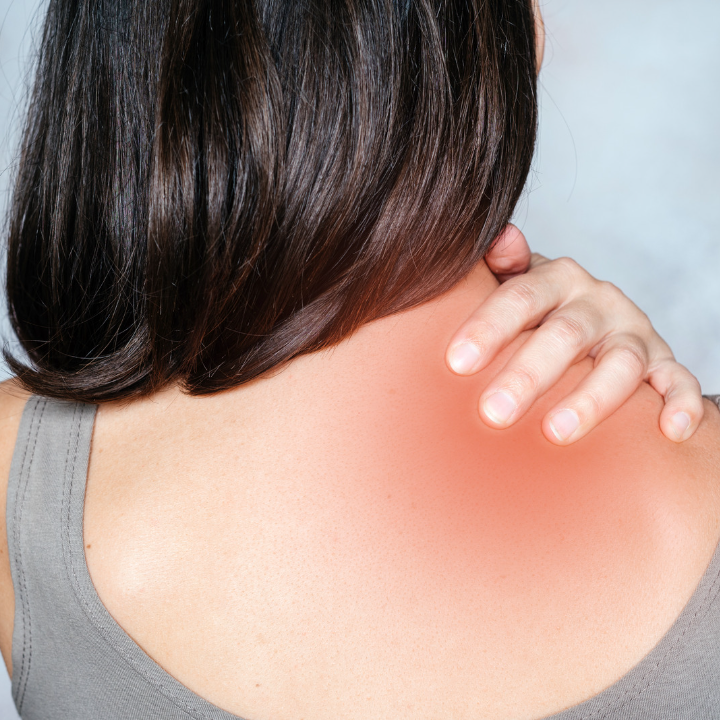Trigger Point Release... Can it Help Me?


What is a Trigger Point?
Trigger points, also called muscle knots, are hyperirritable or very sensitive spots of the skeletal muscle fascia. When pressed on, they can cause a shortening of muscle fibres and produce a symptom called 'referred pain'. A trigger point in a specific muscle area can create pain in another area. For instance, a trigger point on your trapezius (shoulder) muscle will often cause pain up to the side of your neck.
When treating, physiotherapists look for a 'jump sign' as a characteristic behavioural response when pressure is applied to a trigger point. Individuals move involuntarily and jerk some other body part not being palpated, such as the head or shoulders. Patients often report being startled because of intense pain. Other indicators of trigger points include stiffness, spot tenderness, warm sensation of the affected area, and loss of range of motion.

What Causes Trigger Points?
Common factors that form these tender spots include repetitive mechanical stress, poor posture, non-restorative sleep, de-conditioning, joint disorders, mechanical imbalance, and vitamin deficiencies. Damage to muscle and connective tissues can also result in trigger points. These can occur in several ways:
- Injuries from repetitive overuse of the same body parts in the same way, hundreds of times daily, such as typing, using a mouse, using handheld electronics such as phones and tablets, gardening, household chores etc.
- Poor posture due to habit or the use of non-ergonomically designed furniture.
- Sustained loading with heavy lifting, such as carrying boxes, babies, or bedridden patients.
- Direct injury to the tissues (e.g. blow, strain, tear, twist) usually happens in sports injuries, car accidents, falling down the stairs, etc.
- Inactivities such as prolonged sitting or bed rest.

How Can Trigger Point Therapy Help?
Too many trigger points are referred to as myofascial pain syndrome. It is associated with chronic pain caused by the sensitivity and tightness of the affected tissues. The pain is often difficult to localise or find. People with this condition are treated through trigger point therapy or trigger point release massage. It reduces the pain by easing tension and tightness caused by the trigger points.
This manual therapy involves locating the stiff trigger points or knots and applying rubbing and pressing motions using light to medium pressure. The manipulation is repeated multiple times on the same trigger point and surrounding areas until the therapist feels the tension and rigidness are fully released. Or if the patient's range of motion is restored. Trigger point therapy is an underrated, safe back pain treatment, especially for symptoms that don't respond well to anything else.
Patients with myofascial pain syndrome can significantly benefit from trigger point treatment. It is also recommended to individuals experiencing back pain, should pain, hip pain, or any pain containing soft tissue, and loss of flexibility and function after an injury.